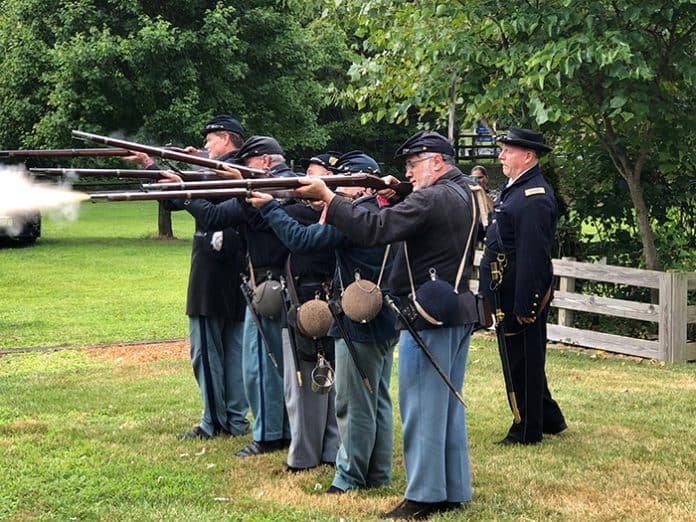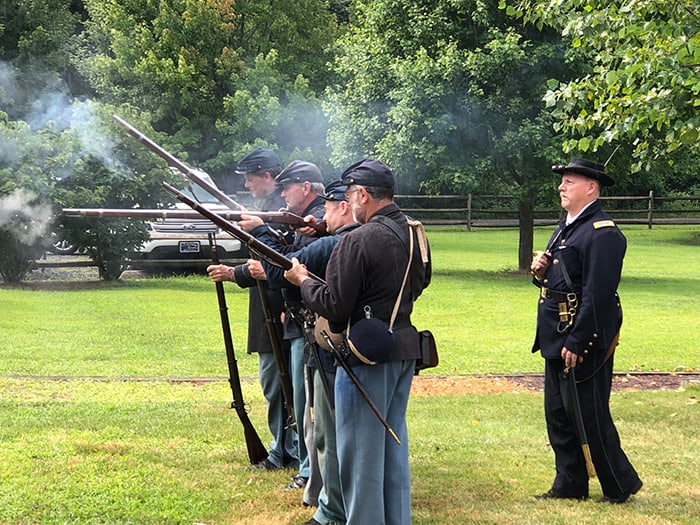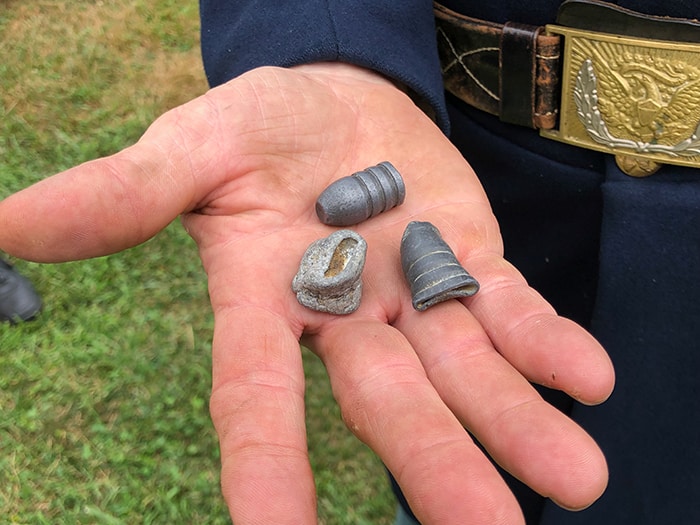
BRICK – The public got to experience living history recently during the Brick Historical Society’s annual Civil War Encampment, held on the grounds of the Havens Homestead Museum.
According to Brick Historical Society Past President Jane Fabach, this was the 19th year the society has hosted the re-enactment. She said an average of 200 people come to see the encampment over the weekend each year, which is free to the public.
“They portray particular people, and they stay in character as they demonstrate what they did while not in battle – chores like cleaning their rifles, keeping their equipment ready, marching and firing their guns – and they talk to people who want to know what it was like,” Fabach said.
Historical Society member Ken O’Connor helped to organize this year’s encampment, which featured “soldiers” from the 61st NY Infantry, Company C.
An encampment is a little different from a re-enactment – such as the one held at Allaire each year that shows a skirmish between Confederate and Union troops, he said.
“They make their own breakfast and lunch over a campfire, and we show how they lived as soldiers of different ranks,” O’Connor explained.
Brick resident “Sergeant” Jim Heine said he enjoys bringing history to life as he and about nine other “soldiers” set up an example of what a Union camp might look like on Friday night before the encampment was open to the public on Saturday.
“We represent the 61st NY Infantry, because when it was formed [for re-enactments] 25 years ago, we were looking for a regiment that did well in the field,” he said. “It is our way of honoring those men. We’ve visited gravesites and some of our members could tell interesting stories about them.”
A core group of the actual Civil War soldiers from the 61st NY Infantry were students from Madison University, which is now Colgate University, Heine said. They fought in every major campaign on the east coast up until Lee surrendered to Grant, he said.

At the beginning of the Civil War, the 61st NY Infantry numbered 850 men, but two years later, after the Battle of Gettysburg – where 63 died – only 136 members were left, Heine said.
About two-thirds of all soldiers died from disease, such as dysentery, typhoid fever and measles, he added.
At the Havens Homestead Museum, the re-enactors showed various examples of tents and weapons, and they held drills and weapon demonstrations over the weekend.
Many of the re-enactors have studied aspects of Civil War life, and have a great deal of knowledge about generals, weapons and even how medical situations were treated, Heine said.
The men spent the night in tents and made their morning coffee over a campfire.

“Obviously we need some modern conveniences – I think everyone has a cooler with water hidden somewhere – but once we’re open to the public, all that gets put away,” Heine said.
Nancy Mink of Cherry Quay came to the Encampment for the first time with her husband and his friend, who are both veterans who served in Vietnam.
“We love it, it’s great. My husband and his buddy are big Civil War buffs – we’re even planning a trip to Gettysburg,” she said after an arms drill on Saturday morning. “We saw this in a newspaper so we decided to come, and I’m glad we did.”






